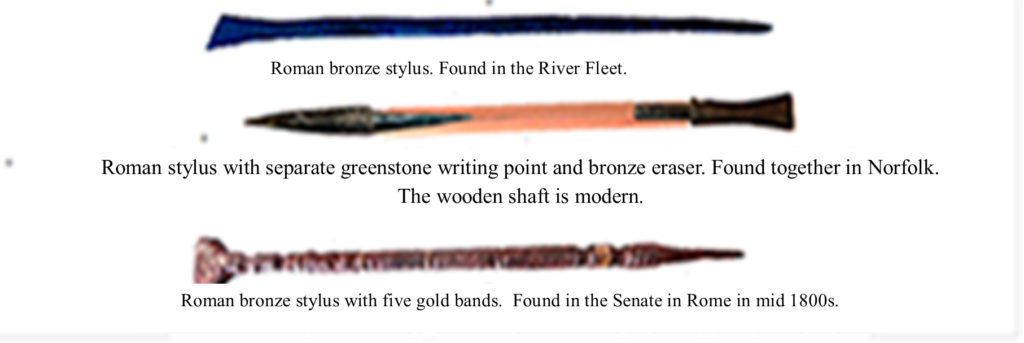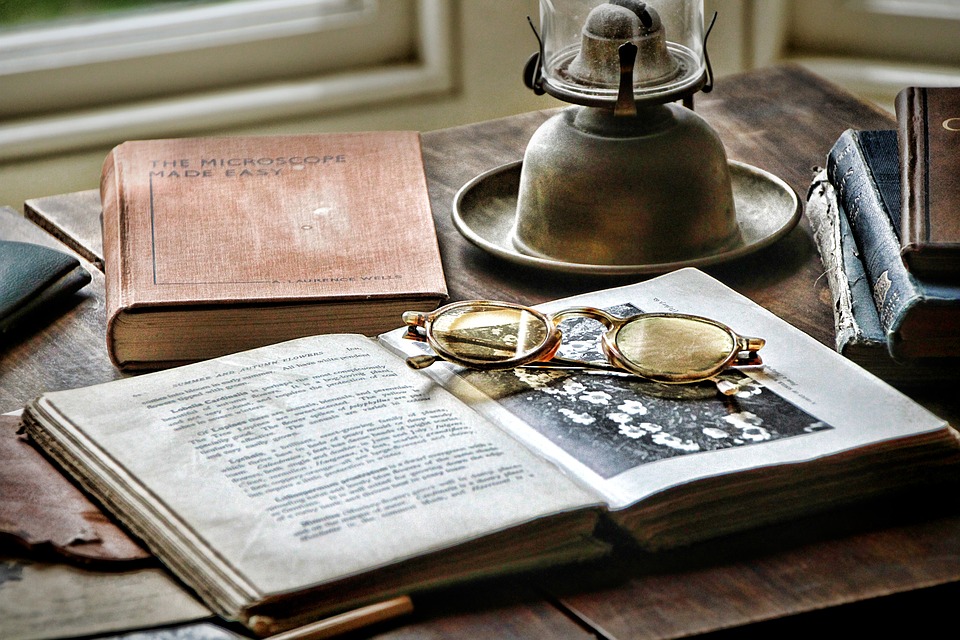The idea of a Museum of Writing was conceived in October 1955. This was rather pompous, as the collection at the time consisted of just three items: a Parker 51 fountain pen, a letter purported to have been written by the secretary of Charles Dickens (that turned out to be written by Dickens himself), and a 15thC manuscript that was torn and repaired with earlier manuscripts, obtained from an elderly gentleman who supplemented his pension by making lampshades out of vellum and parchment.
The collection grew rapidly because items could be picked up for a song, including many from a skip on the forecourt of the British Museum, as nobody was really interested in them. In the mid-1990s a Museum of Writing (MOW) committee was formed consisting of experts in various writing-related fields including Professor Michelle Brown of the IES, Dr. Irving Finkel of the British Museum, and Philip Poole who had the world’s largest collection of pen-nibs. In 1999 Philip Poole died leaving the majority of his collection to the MOW. Eventually in October 2010, exactly fifty-five years from its conception, the MOW was obtained by the IES, thanks to Professors Simon Eliot and Warwick Gould. Now called the Museum of Writing Research Collection, it consists of over one hundred thousand items covering the history of writing from its beginnings to the present day and has been acknowledged as one of the world’s most comprehensive writing-related collections.
Over the years, items from the collection have been used in films such as Miss Potter, Bright Star and Oliver; on television – and even on radio. They have been lent to British Library, British Museum, and Tate Gallery exhibitions, and have provided illustrations for many books and articles. In addition, they have been the subject of numerous lectures at, among others, the London Rare Book School and the London International Palaeography Summer School, the Universities of Bath, Reading, Newcastle, and at the Sorbonne. Images of items have even been incorporated in the world’s first circular, CD-ROM postage stamps that were issued in Bhutan in 2008.
Our latest loans are presently in the British Library, ‘Writing: Making your mark’ exhibition to be found at:
https://www.bl.uk/events/writing-making-your-mark
The items that we have lent are:
Three Roman styli.

Three Roman styli.

Three Medieval leads; the forerunners of the pencil.

A 17thC penner incorporating an inkwell, sander for drying ink, a penknfe, and a quill

A 1749 ‘Plume sans fin’ – the endless pen, patented by Nicolas Bion in the 17thC- the forerunner of the fountain pen.

A quill belonging to Alfred, Lord Tennyson that was used by him, became bent, and was thrown away. It was picked up by a local farmer in whose family it was kept until donated to the MOW.

One of the first Biros. They were manufactured by the Miles Martin Aircraft Co. in 1945 and supplied to the RAF.
Our next important venture, and maybe the most exciting for us, is the launch of our Virtual Museum of Writing, which we hope to be announcing in the near future.
Alan Cole: Consultant, Museum of Writing Research Collection

